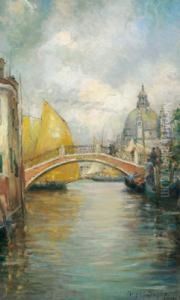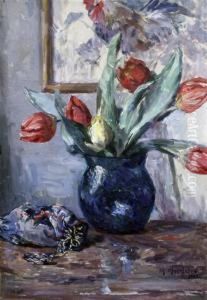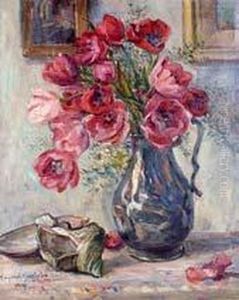Margaret Moscheles Paintings
Margaret Moscheles was an English artist and suffragette born in 1854. She hailed from a family with strong connections to the arts; her father, Felix Moscheles, was a well-known pianist and composer, as well as a friend of the famous composer Felix Mendelssohn. Margaret grew up in an environment that was rich in cultural and intellectual stimulation, which likely played a significant role in her development as an artist.
Moscheles received her artistic training at the Slade School of Fine Art in London, which was one of the few institutions that accepted female students at the time. During her career, she worked primarily as a painter, but she also involved herself in the suffragette movement, fighting for women's right to vote in the United Kingdom. Her engagement in this cause was reflected in her work and activities, as she often used her art to promote the movement's ideals.
Although Margaret Moscheles was not as widely recognized as some of her contemporaries, her work did contribute to the cultural milieu of her time. She exhibited with various art societies, including the Society of Women Artists and the Royal Academy. Her style was characteristic of the late 19th and early 20th centuries, and she painted a variety of subjects including portraits, landscapes, and genre scenes.
Moscheles' contribution to the art world was not solely through her paintings. She also played a role in art education, particularly in advocating for the professional training and recognition of women artists. Her dedication to women's rights and her efforts in the suffragette movement were intertwined with her artistic career, making her an important figure in the history of women artists in Britain.
Margaret Moscheles died in 1926, leaving behind a legacy of both her artwork and her activism. Her life and career were emblematic of the struggles and achievements of women artists during a time when they were fighting for equality both in the art world and in society at large.


